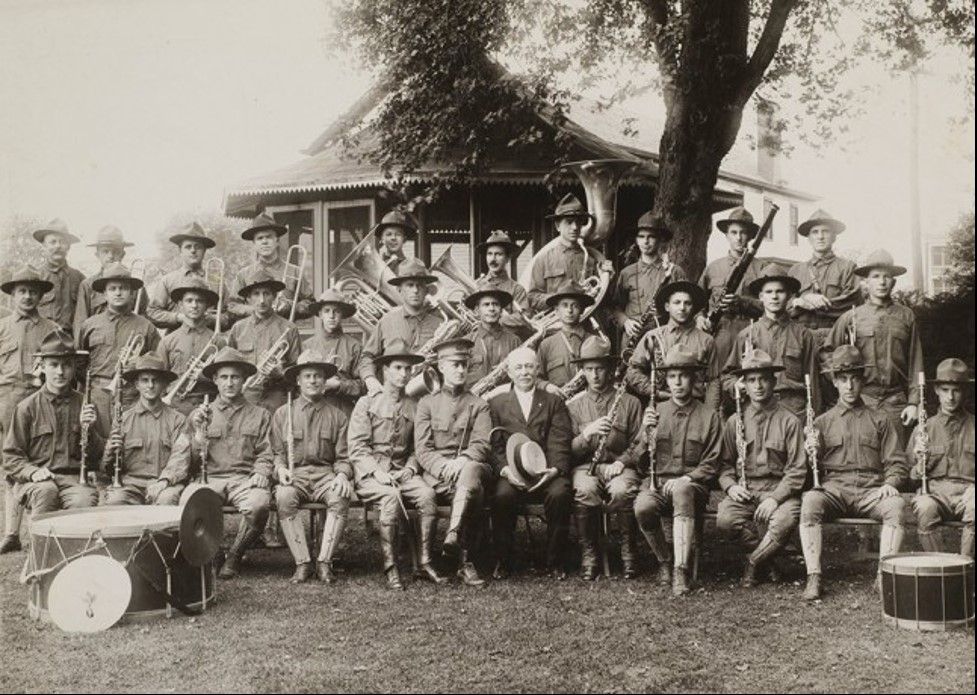By CW3 Thomas Jackson, currently assigned to the U.S. Military Academy
Disclaimer - The views expressed herein are those of the author and do not reflect the position of the United States Military Academy, the Department of the Army, the Department of Defense, or the Adjutant General's Corps Regimental Association (AGCRA).
The Army is an ever-changing, ever-adapting organization that seeks to keep itself relevant and ready for the challenges of tomorrow. Anyone who has taken the “How the Army Runs” course or has worked in the PPBE process knows that, outside of national strategy, “faces to spaces” and wargame informed drivers are what constitute the shape and makeup of our institution. Unfortunately, as the Army continues to prioritize its capabilities for the constantly developing battlefield, “prioritization” often means leaving historic organizations in its wake. Such is the case with the 399th Army Band at Fort Leonard Wood, Missouri.
In the era of all-to-regular band inactivations, the loss of another historically significant unit is painful to our Corps, but not surprising. With the growth of cyber warriors and drone pilots, and the focus on Multi-Domain Operations and Large-Scale Combat Operations, someone must move out of the way to make space. However, when two visionary masters of their fields join forces to identify a need for the Army and bring a solution to fruition, we should stop to recognize their efforts and pause when the fruits of their labor become passé to so many.

Long before the 399th Army Band was activated in the throes of World War II, parades were very fashionable. With no streaming content or gaming consoles, families were hard-pressed to find entertainment outside their own hobbies and abilities. So, in 1909, when the annual Hudson-Fulton Celebration parade marched from 115th Street to Washington Square in New York City, it was an experience the entirety of the locale beheld. The parade in 1909 was a particularly large event with an audience of 2,250,000, the largest event in New York’s history[1]. One such onlooker was Dr. Frank Damrosch, the President of the Institute of Musical Art (later to be named The Juilliard School), arguably the premier music instruction institution in America. While enjoying the nearly three-hour, six-mile long parade of 25,000 soldiers, sailors, and bands from myriad nations, Dr. Damrosch was struck by a horrible realization:
"[I] could not but be impressed by the fact that the worst music from all the bands we heard was that of the United States Army bands. I was so chagrined over this condition that at the next meeting of the Executive Committee I requested that the Institute of Musical Art offer to the Secretary of War a certain number of scholarships for Army band musicians… to become band leaders and teachers of band musicians in the United States Army.”[2]
Nearly two years later, in April 1911, Dr. Damrosch finally had the opportunity to meet with Jacob M. Dickinson, the Secretary of War. Unfortunately for Dr. Damrosch, the Secretary was unavailable as he had become recently ill. In his stead, the Secretary’s Chief of Staff, General Leonard Wood would hear Dr. Damrosch’s request. When Damrosch explained his proposal, General Leonard Wood responded, “Doctor Damrosch, if you will do this for the United States Army, you will be the greatest benefactor it has ever had.”[3]
Between 1913 and 1920, General Leonard Wood’s and Dr. Damrosch’s grand experiment with The Institute of Musical Art provided instruction to five new band leaders each year. Each new student undertook a two-year course of study under the tutelage of the renowned Captain Arthur Clappé, By the time the experiment ended, Damrosch’s and Clappé’s Military Band Department had graduated forty-seven band leaders for the Army. Upon the death of Captain Clappé, General John J. “Black Jack” Pershing moved the school from Governor’s Island, New York to Washington, D.C and simultaneously created a band of one-hundred musicians under the command of Captain William Jennings Stannard, a graduate of the Institute of Musical Art’s Military Band Department.

And so it is that the General who was responsible for creating the first Band Officer course in the Army, who ultimately understood that a Nation’s military bands are a direct reflection of its might, and whose program developed the first Commander of The United States Army Band, “Pershing’s Own,” is losing the band at his namesake’s post - a tragic irony upon which we ought to pause and reflect.
[1] “Millions Cheer Martial Pomp: City’s Biggest Crowd Drawn by Marching of the Fighting Men of the Nations.” The New York Times, 01 Oct. 1909, p.1.
[2] Institute of Music Art History, 1905-1926 by Frank Damrosch. New York: Juilliard School of Music, 1936.
[3] Ibid.
